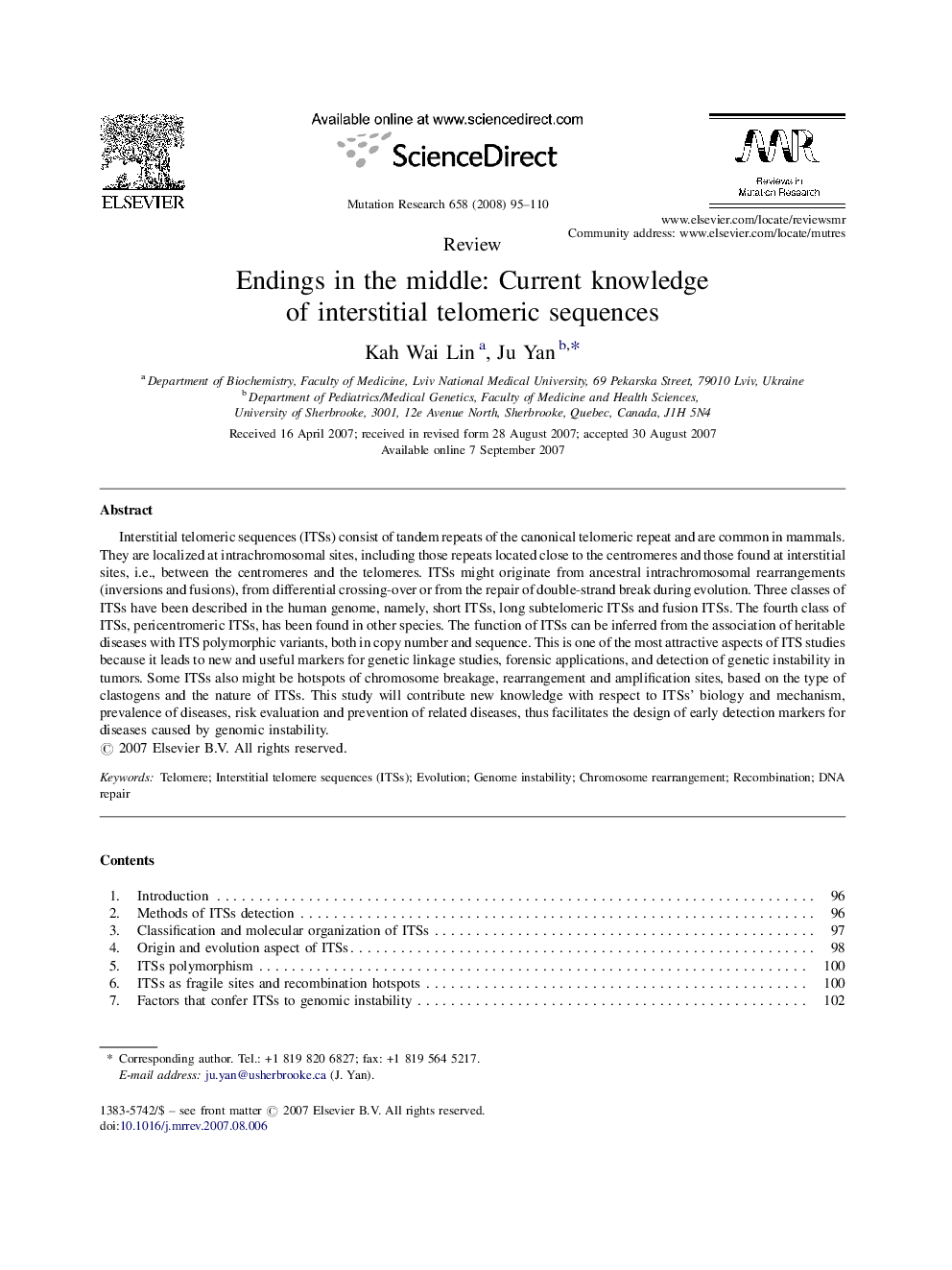| Article ID | Journal | Published Year | Pages | File Type |
|---|---|---|---|---|
| 2149906 | Mutation Research/Reviews in Mutation Research | 2008 | 16 Pages |
Interstitial telomeric sequences (ITSs) consist of tandem repeats of the canonical telomeric repeat and are common in mammals. They are localized at intrachromosomal sites, including those repeats located close to the centromeres and those found at interstitial sites, i.e., between the centromeres and the telomeres. ITSs might originate from ancestral intrachromosomal rearrangements (inversions and fusions), from differential crossing-over or from the repair of double-strand break during evolution. Three classes of ITSs have been described in the human genome, namely, short ITSs, long subtelomeric ITSs and fusion ITSs. The fourth class of ITSs, pericentromeric ITSs, has been found in other species. The function of ITSs can be inferred from the association of heritable diseases with ITS polymorphic variants, both in copy number and sequence. This is one of the most attractive aspects of ITS studies because it leads to new and useful markers for genetic linkage studies, forensic applications, and detection of genetic instability in tumors. Some ITSs also might be hotspots of chromosome breakage, rearrangement and amplification sites, based on the type of clastogens and the nature of ITSs. This study will contribute new knowledge with respect to ITSs’ biology and mechanism, prevalence of diseases, risk evaluation and prevention of related diseases, thus facilitates the design of early detection markers for diseases caused by genomic instability.
